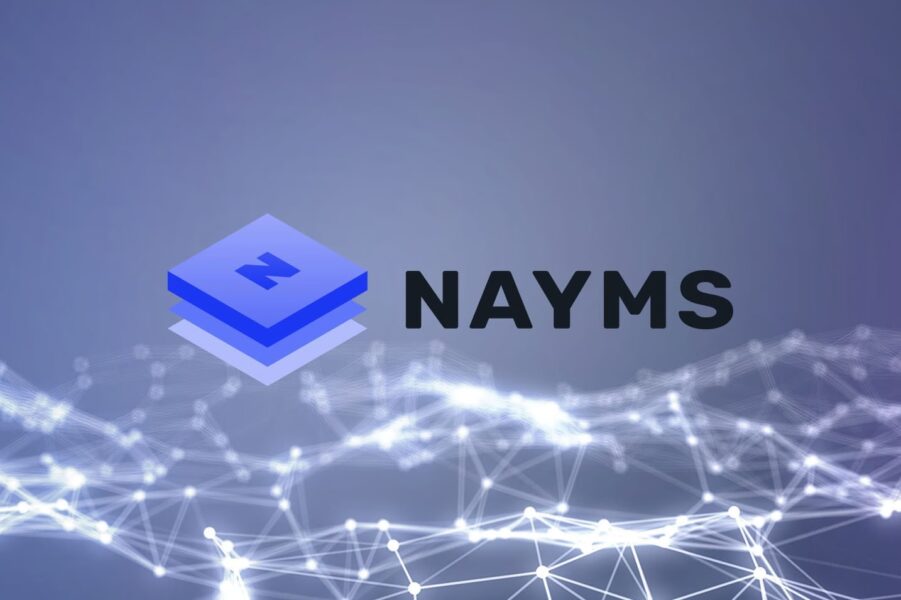Decentralized and traditional finance can thrive in tandem to fund renewable energy and other pressing needs, but only with clear standards and rules – Michael Casey, CoinDesk chief content officer, shared his opinion with International Monetary Fund (IMF).
The cryptocurrency industry is in the throes of a crypto winter.
Tokens like bitcoin and Ethereum’s ether have lost three-quarters of their value while major crypto lending and investing firms have collapsed into bankruptcy.
But to be fair, it’s also pretty wintry in traditional finance – or TradFi, as the crypto and DeFi (decentralized finance) community refers to the financial and economic old guard. We have the highest inflation in 40 years, a war that’s fractured the international monetary system, an energy and commodity crisis sowing famine and political unrest, and record temperatures exposing a massive shortfall in investment to fight climate change.
The reality is, both sides need each other.
If they are to attain mainstream adoption, DeFi and crypto must integrate some of the regulatory and self-regulatory practices that have brought functional stability to TradFi. But there’s also an urgent need for the stewards of the global economy to explore DeFi and crypto solutions to its many problems.
One area to focus on is the highly centralized energy industry.
Consider the negotiations with Saudi Crown Prince Mohammed bin Salman to boost oil production and combat soaring global prices in the aftermath of Russia’s invasion of Ukraine. That world leaders must cater to the interests of a sole unelected human being to solve an economic crisis that affects all 8 billion of us is the epitome of a centralization problem.
Another stark example: Germany’s dependence on Russian natural gas, which constrains its capacity to impose sanctions on the Kremlin. Or last year’s shutdown of the Colonial pipeline, when ransom-demanding hackers exploited the fact that 60 million people depend on the pipeline’s gasoline. And one more: 2017’s Hurricane Maria, which after knocking down a few high-voltage transmission lines, left 90 percent of Puerto Ricans deprived of power for months.
Vulnerability to outside events – which electricity system designers describe as a lack of “redundancy” – is as good a reason as any to advocate for renewable energy in response to the climate crisis. We desperately need to decentralize our energy model. Renewables such as solar, geothermal, and wind – or the recycling of waste heat and energy – are the answer. They are locally sourced and can function at wide ranges of scale.
But what does decentralized energy have to do with decentralized finance?
It starts with recognizing that the world’s insufficient response to our energy crisis is not a failure of technology – it’s a failure of funding.
The Climate Policy Initiative, a San Francisco–based think tank, estimates that the world invested $632 billion in addressing climate change in 2019–20, far short of the $4.5–$5 trillion it says is needed annually to achieve net zero carbon emissions by 2050.
It’s not for lack of desire – governments and companies everywhere are committing to ambitious carbon reduction goals. It’s that investors can’t find enough projects in whose promised returns and impact they are sufficiently confident.
In most cases, two elements are lacking: first, reliable, rapidly actionable information with which to measure and project outcomes, and second, a source of persistent, flexible user demand that would make renewable energy production economically viable in places where it’s available.
Both can be addressed by the financial innovation spurred by the open-source developer communities of DeFi and crypto.
Green funding potential
The prospects for actionable information lie in the technology’s ability to immediately convert data into tradable assets, a result of its automated, near-instant peer-to-peer settlement and its capacity to define unique digital units of any size or value. The efficiencies are potentially enormous when compared with, say, the analog world of green bonds, which require many layers of bureaucracy and are based on retroactive data that take months, even years, to generate and verify.
Crypto technology allows plants fitted with provably secure sensors and blockchain-based tracking systems to verify they’re generating renewable power and then instantly represent that information as unique one-off tokens.
In a DeFi environment, those tokens can become collateral for lenders. Incorporating programmable cryptocurrencies, stablecoins, or central bank digital currencies, the model gives investors a form of remote security. With governments and ESG-compliant companies ratcheting up demand for proven carbon-reducing assets, a giant pool of liquidity could arise around these tokens, forging the deep capital markets that climate action needs.
This approach could drive down financing costs for all kinds of projects. Imagine a remote community in Rwanda building a DeFi-funded solar microgrid to power a new irrigation system and you get an idea of the potential.
And then there’s the demand problem.
Imagine that economies of scale require that, to be financially viable, the Rwandan microgrid must have at least 2 megawatts of capacity, but the new irrigation system needs only 500 kilowatts. How would a poor community with modest electricity needs make up the shortfall?
The answer lies in Bitcoin, which may seem counterintuitive to anyone who has joined recent crusades to ban “wasteful” proof-of-work mining in New York and elsewhere.
Unlike other users of energy, Bitcoin mining is geography-agnostic. Miners will operate anywhere. They will happily absorb any community’s excess or otherwise wasted energy, so long as it is priced low enough to keep them profitable and competitive.
What is the cheapest form of energy? By definition, it’s renewables. Already, 53 percent of the Bitcoin network runs on renewable energy, according to the Cambridge Center for Alternative Finance, not because miners are altruistic but because they are profit-seeking.
Now that bitcoin prices have plunged, and with Intel’s new Blockscale application-specific integrated circuits (ASICs) poised to create a glut of cheap chips for miners, the presence of low-cost energy will become the main factor in any miner’s expansion plans.
As long as regulators don’t prevent them from forging relationships, renewable energy developers will find miners to be willing, valuable partners. They will agree to large energy contracts up-front that underwrite plant development and commit to consuming excess energy production during periods of low community consumption to smooth out the troughs and peaks in the grid. Mining can make the economics of electricity predictable and viable.
To be fair, the other 47 percent of the Bitcoin network is emitting a lot of carbon. The Cambridge Center for Alternative Finance’s midrange estimate is that the total network currently consumes around 84 terawatt hours of electricity annually, about 0.38 percent of total world consumption. That’s because Bitcoin’s proof-of-work algorithm is highly energy-intensive. It’s why proponents of far less energy-intensive proof-of-stake systems advocate their usage for digital assets such as non-fungible tokens.
Like it or not, however, Bitcoin is not going away. When mining is banned in one place, it simply moves, as in 2021, when a ban in China prompted much of the industry to migrate to the United States, Kazakhstan, and other places.
If we can’t regulate Bitcoin out of existence, then the objective should be to steer it toward renewable sources – or away from fossil fuel sources. It’s time for sensible energy policies that remove subsidies for dirty power plants and entice Bitcoin miners to provides long-term funding commitments to renewable providers with minimum capacity thresholds for their communities.
The goal here is not just renewables expansion, but decentralization. Let’s not follow the lead of El Salvador, whose government is mining Bitcoin at a government-owned geothermal plant and keeping the proceeds for itself. Rather, developing economies should encourage partnerships between miners and community-based solar microgrids, spreading wealth and generation capacity to achieve both social goals and grid redundancy.
Rethinking regulation
None of this is to say the crypto industry is without problems. The sector’s recent financial contagion highlighted the dangers of a speculation culture that spawned unfettered leverage and scams. The use of anonymity to front-run markets through wash trades and other pump-and-dump scams is especially acute. Clearer, more effective regulation is needed.
We should avoid, however, applying the outdated regulatory models of the existing centralized financial system to decentralized crypto projects that function very differently. By applying a centralized solution – for example, by trying to make far-flung, leaderless groups of open-source developers accountable for users of the DeFi protocols they work on – we may introduce rather than mitigate risks.
The three biggest sources of the recent financial contagion were centralized “CeFi” services – Celsius, Voyager Digital, and Three Arrows Capital – while the other big failure, the de facto Ponzi scheme known as Terra Luna, was DeFi in name only. Real DeFi projects such as Aave and Compound have so far survived this intense stress test remarkably well.
Yet there are other big risks in DeFi. Crypto security firm Immunefi estimates that $670 million was lost in the second quarter of 2022 from smart contract breaches and hacks. If DeFi is to win over new followers, users will need much stronger assurances that their funds are safe.
The trick is to find a balance
Regulators should impose stricter fiduciary requirements on the managers of CeFi services – treat them like brokerages or other regulated financial institutions. But for DeFi operations, they should work with the industry to develop self-regulatory solutions that tap its technological strengths and lean into its decentralized structure. Ideas include expanding the “bug bounties” that reward developers who identify and fix incidents, mandating periodic software audits, and conducting frequent stress tests of leverage and collateral models.
Above all, we need consensus around what constitutes a decentralized system and on whether projects that intend to evolve in that direction are appropriately doing so.
In short, all interested parties from both the DeFi and TradFi worlds must first agree on frameworks and a common lexicon, then establish standards and rules. This is not easy – but it must be done. There is too much at stake.
Image Source: https://www.michaeljcasey.com/



